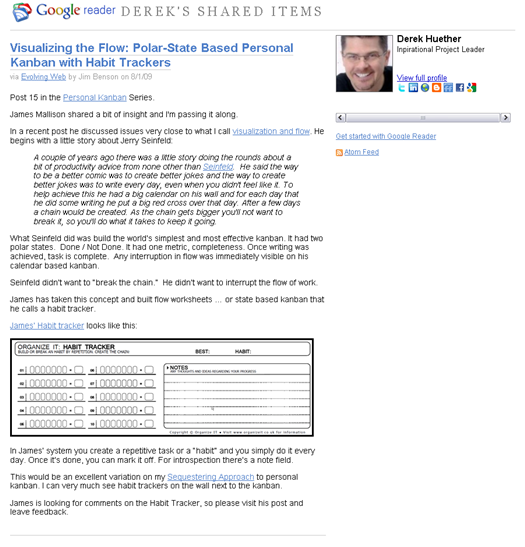I'm not going sit here an boast of being some kind of expert on Kanban or guru of personal productivity. I'm just a Project Manager/Leader who is always keeping his eyes and ears open for newer or better ways to manage time or work. I believe you should always try to eliminate non-value-added processes, resulting in a positive impact of customer satisfaction, while reducing support costs. How do you do that? You get it done as effectively and efficiently as possible. I recently completed Getting Things Done by David Allen. It was an interesting book. Though I use paperless processes to "get things done", David offered one bit of advice that resonated with me. To advance a task or activity to more of an actionable conclusion, he said to ask "What's the next action?"
This parallels what I do with my Kanban (task) board. I currently have 4 columns: Backlog, Work In Progress (WIP), Blocked, Done. When a prioritized task can not be worked, I put the task card (user story) in the "blocked" column. I then ask myself the question. What's the next action? Without asking yourself that simple question, your task may be blocked longer than necessary. You have to understand there may be 3 or 4 steps you need to complete before you can unblock your task and get it back to WIP. So, ask the question.
As to not ignore the obvious, I recommend you write your tasks in a standard user story format.As a [perspective], I want to [activity], so I can [desired outcome]
It doesn't matter if you use a physical or virtual Kanban (task) board. I recommend following 3 simple rules:
Keep your tasks visible
Keep your tasks limited
Keep your tasks actionable






